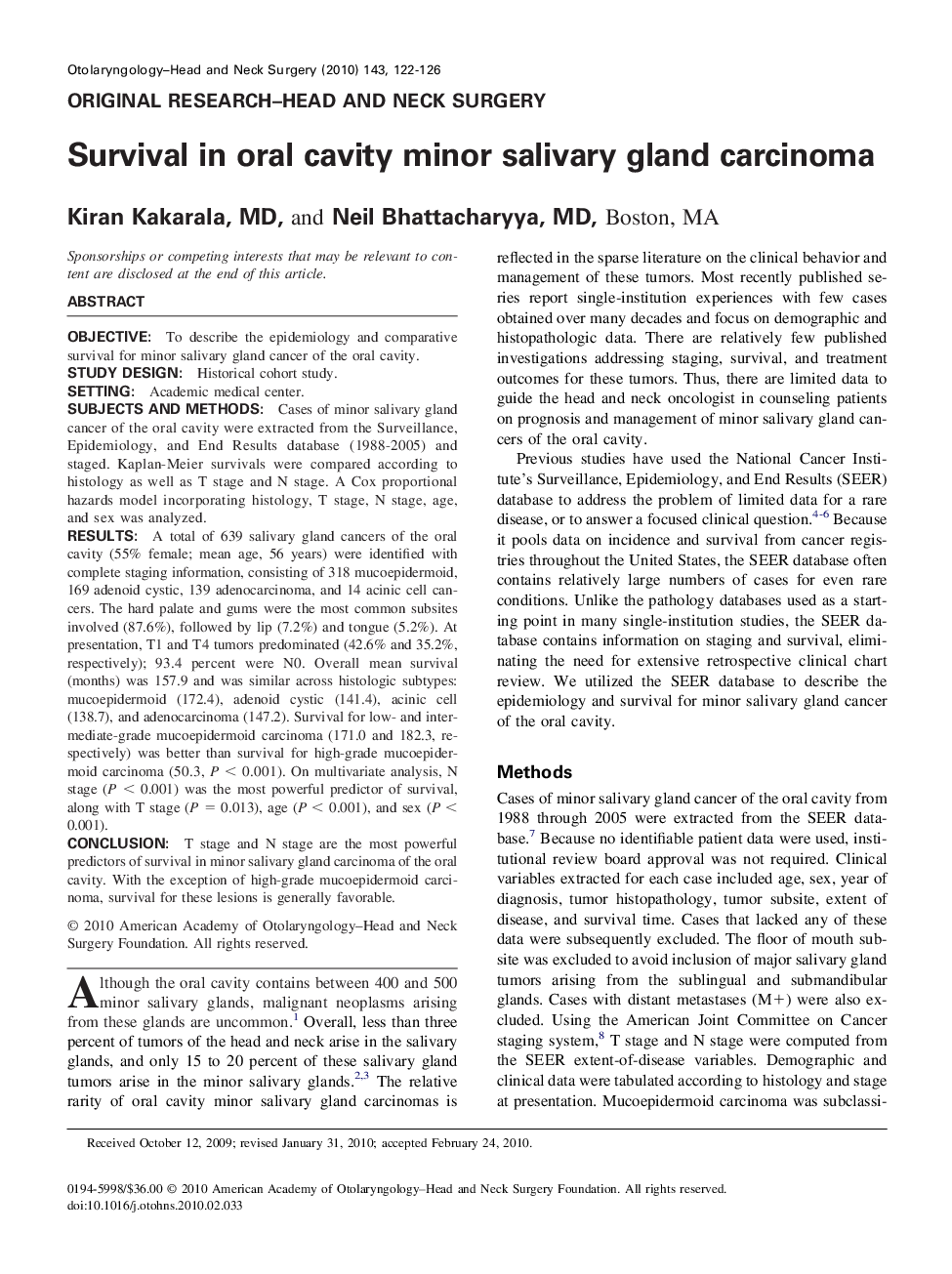| Article ID | Journal | Published Year | Pages | File Type |
|---|---|---|---|---|
| 4124843 | Otolaryngology - Head and Neck Surgery | 2010 | 5 Pages |
ObjectiveTo describe the epidemiology and comparative survival for minor salivary gland cancer of the oral cavity.Study DesignHistorical cohort study.SettingAcademic medical center.Subjects and MethodsCases of minor salivary gland cancer of the oral cavity were extracted from the Surveillance, Epidemiology, and End Results database (1988-2005) and staged. Kaplan-Meier survivals were compared according to histology as well as T stage and N stage. A Cox proportional hazards model incorporating histology, T stage, N stage, age, and sex was analyzed.ResultsA total of 639 salivary gland cancers of the oral cavity (55% female; mean age, 56 years) were identified with complete staging information, consisting of 318 mucoepidermoid, 169 adenoid cystic, 139 adenocarcinoma, and 14 acinic cell cancers. The hard palate and gums were the most common subsites involved (87.6%), followed by lip (7.2%) and tongue (5.2%). At presentation, T1 and T4 tumors predominated (42.6% and 35.2%, respectively); 93.4 percent were N0. Overall mean survival (months) was 157.9 and was similar across histologic subtypes: mucoepidermoid (172.4), adenoid cystic (141.4), acinic cell (138.7), and adenocarcinoma (147.2). Survival for low- and intermediate-grade mucoepidermoid carcinoma (171.0 and 182.3, respectively) was better than survival for high-grade mucoepidermoid carcinoma (50.3, P < 0.001). On multivariate analysis, N stage (P < 0.001) was the most powerful predictor of survival, along with T stage (P = 0.013), age (P < 0.001), and sex (P < 0.001).ConclusionT stage and N stage are the most powerful predictors of survival in minor salivary gland carcinoma of the oral cavity. With the exception of high-grade mucoepidermoid carcinoma, survival for these lesions is generally favorable.
